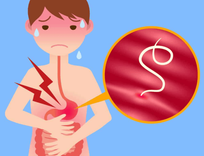The article was professionally consulted by Specialist Doctor II Le Thanh Cam - Pediatrician - Department of Pediatrics - Neonatology - Vinmec Danang International General Hospital.
A 16-week-old baby can practice rolling over. When placed on their stomach, the baby begins to lift their neck and shoulders with the support of their arms, which helps them roll over and back. This exercise supports the development of the baby’s muscles and helps them discover more of their abilities. The baby will practice performing this movement independently, though it is quite a risky activity.
1. The development of a 16-week-old infant
This week, your baby is focusing on improving hand-eye coordination to perform more agile actions. The fine motor development of a 16-week-old baby is increasing, and the baby can now reach for objects around them more effectively, allowing them to grasp things more quickly and securely. You can help your 16-week-old adjust their hand-eye coordination by moving a toy or an object in front of them. At the same time, you can observe whether the baby’s eyes follow the object and whether their hands reach for it.
Now that your baby is four months old, you may start to notice many changes in their personality. They might look at you more often or even sneak peek at you. How can you observe these changes in your baby at this age? Did you know there are nine different traits that describe a child’s temperament and how they react positively and experience the world around them? Here are the nine traits:
- Activity level: is the baby very active, or less active?
- Distractibility: is the baby easily distracted, or more focused?
- Intensity: Is the baby intense, or more relaxed and easy-going?
Frequency of activity: is the baby very active in a routine, or more spontaneous? - Sensitivity: Is the baby highly responsive, or less responsive?
- Approachability: is the baby very approachable, or more reserved?
- Adaptability: Is the baby adaptable easily, or does it take longer?
- Persistence: is the baby persistent with things, or easily bored?
- Mood: is the baby happy and quick to smile, or more serious and thoughtful?
From these nine personality traits, you can get to know your baby on a deeper level and help them have the skills to experience the world around them in their own special way.

2. Sleep of a 16-week-old baby
The main reason newborns experience sleep regression at four months is that they have transitioned from infant sleep patterns to a more adult-like sleep cycle. This significant change in sleep leads to more frequent night wakings. Here are some ways you can help ease this transition:
- Encourage your baby to sleep during the day. Pain returns in the first few weeks after birth, so stimulate your baby’s developing brain and try to clear out those pains before bedtime. Try things like baby play, tummy time, and reading.
- Create a relaxing atmosphere. One study found that babies who spent more time outdoors in the afternoon slept better.
- Try giving your baby a massage. Massage effectively affects cortisol levels, the stress hormone, and stimulates the production of melatonin, which helps your baby fall asleep faster and stay asleep longer.
- Stick to your baby’s routine, even if it looks a little different at night than during the day, and help them sleep the same way they’re used to. Any changes will be up to your baby to make.
- Try a sleep sack that can be worn. Remember, a crib is often no longer suitable once your baby starts rolling over. Because, it does pose a suffocation risk, but there are many types of sleeping bags that can provide similar comfort and promote your baby's sleep.
- Ask for help. This can be an extremely tiring time (for both the baby and the mother) you should not hesitate to ask for some help while you want to have a deep sleep.
Above all, know that this is only a temporary period and that the baby will soon return to a sleeping style that works for the whole family.

3. Time for babies to prepare for additional food
The American Academy of Pediatrics recommends starting between 4 and 6 months of exposure to food. Typical First Foods: a type of cereal that contains a relatively high amount of iron. You can prepare it by mixing a small amount of cereal powder with formula milk or breast milk to create a thick mixture. When it's time to eat, have your baby sit in a high chair or booster seat, scoop a little cereal with a baby spoon, and gently dab it on your baby's lips. As your baby gets a taste of this new food, try scooping a little more and placing it in their mouth. Babies will naturally push out what they eat with their tongues, but you should be patient and continue practicing with them.
Some babies are natural eaters, in which case all you have to do is offer them a variety of foods. Other babies are reluctant eaters, so take it slow and don’t expect them to eat much. Start by offering half a teaspoon the first few times. Picky eaters often adapt to new tastes after repeated exposure. Over a few weeks, you can ease your baby into other foods, such as mashed bananas, sweet potatoes, peas, and pureed carrots. You can introduce vegetables first before your baby has developed the perception that everything edible has to be sweet.

4. Food allergy in children
When your baby begins trying new foods, it's important to watch for signs of allergic reactions. If food allergies or conditions like eczema are hereditary in your family, your baby may be at a higher risk. The symptoms of allergies can vary, but some common allergic reactions include itching, redness, or gastrointestinal issues, as well as problems like vomiting, constipation, or diarrhea. In rare but severe cases, the reaction can lead to anaphylactic shock, which may cause swelling or difficulty breathing. If you notice your baby struggling to breathe, wheezing, or swelling, seek emergency medical care immediately.
To reduce the risk of allergic reactions in your baby, your doctor will provide advice on avoiding certain foods, such as egg whites, cow's milk, and peanut butter, until your baby's digestive and immune systems are more developed. This will help your baby’s system recognize these proteins in foods as foreign substances and potentially trigger an allergic reaction.
One food-related condition whose symptoms may not be immediately obvious is celiac disease. This is a reaction to gluten, a protein found in many grains, and is one of the reasons why most pediatricians recommend that babies start on rice, a gluten-free grain. These babies cannot digest gluten and may experience symptoms such as diarrhea, vomiting, and general fussiness. While fewer than one in 100 people have celiac disease, your baby may be diagnosed with it. If a family member has the condition, monitor your baby for symptoms after you introduce oatmeal or other grains, and let your doctor know if this condition runs in your family.
If you notice unusual signs in your child, parents should take their child to reputable medical facilities for consultation and examination.
To arrange an appointment, please call HOTLINE or make your reservation directly HERE. You may also download the MyVinmec app to schedule appointments faster and manage your reservations more conveniently.








